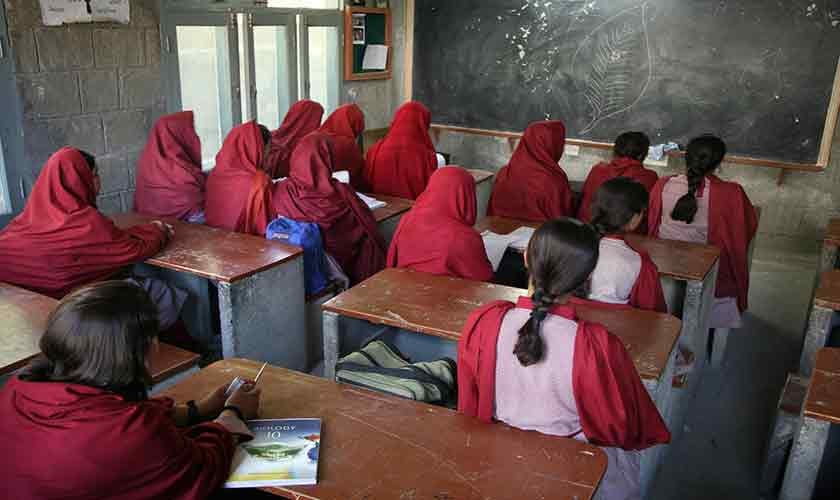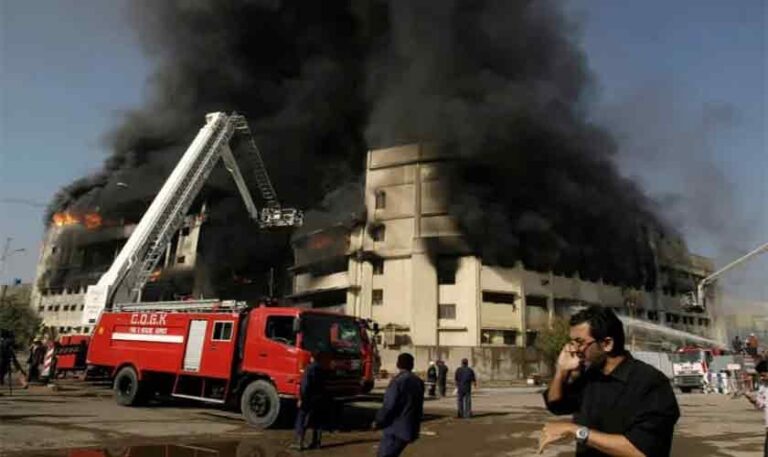
#Invisible #education #system #Political #Economy
Half of Pakistan’s school-age children attend private schools that the government cannot oversee. Some are in large urban institutions, while others are in small, charter schools, but the majority are officially unregistered. Their records are absent from national databases, and their educational progress is not tracked. The government’s Education Management Information System (EMIS) focuses on government school students but excludes millions of people in private schools. As a result, about 47% of students are not seen to be served by the education system.
It goes beyond hidden bureaucratic issues. This is a national blind spot. With no reliable data on enrollment or student achievement, Pakistan struggles to understand what nearly half of its students are learning or if they are learning at all. Official statistics, reports, and reforms that rely only on public school data provide an incomplete view. The rest of the education system operates without monitoring, evaluation, or recognition. This hidden class is the invisible half of Pakistan’s educational landscape.
Although international and national human capital indicators generally rely on official data from recognized public and private institutions, excluding unregistered private schools leads to substantial underestimation of key metrics such as gross and net enrollment rates, expected years of schooling and average attainment. This has led to misleading perceptions of low educational engagement, hiding the fact that millions of children are studying in schools but not reflected in official statistics.
This data gap reveals a fundamental problem that hinders Pakistan’s ability to properly evaluate, manage and expand its education system. While government monitoring systems, such as the National Education Management Information System (NEMIS) and the Pakistan Institute of Education (PIE), focus primarily on public schools by collecting data on enrollment, teacher qualifications, classrooms, and student numbers, there is no equivalent framework for private schools.
There is no central database for private institutions, no annual census of students, and no standard procedure for evaluating their performance. Although provincial departments have registration systems, these are often incomplete, outdated, or disconnected from national databases. As a result, reliable data on private school enrollment, teacher credentials, or learning outcomes is largely absent.
Thus, the government cannot ensure that children in private schools receive a quality education and therefore cannot identify low-performing schools, offer targeted teacher training, or design support programs where they are most needed. Thus, Pakistan examines only a small part of its education sector and draws broad conclusions about the entire system.
Across the country, private schools are widely seen as a better choice than public institutions, symbolizing discipline, English proficiency and academic success. Parents, often making significant financial sacrifices, enroll their children in these schools, believing they offer a path to social mobility.
However, these beliefs are mostly based on anecdotal evidence rather than verified data. Because the government neither collects nor publishes performance information for private schools, there is no clear way to determine whether these institutions actually deliver better learning outcomes.
This situation has intensified the debate on national education through perceptions rather than facts. While public schools face detailed scrutiny, including teacher performance and textbooks, the private sector is largely ignored. This creates a dilemma: Pakistan equates visibility with quality, believing that private schools are better simply because they are more visible and organized.
Emerging evidence is beginning to challenge these long-held assumptions. The Pakistan Institute of Education (PIE) recently assessed the performance of public and private schools in Islamabad by administering the National Assessment Test (NAT) to students from both sectors. The results showed no significant difference in learning outcomes between the two groups.
Every child, regardless of where they study, is the responsibility of the state. By creating a comprehensive, data-driven education system, Pakistan can finally ensure that every child’s learning is recognized, measured and valued, not just their attendance.
Interestingly, government school students slightly outperformed private school students in Urdu and Mathematics, while private school students had a marginal advantage in English, possibly due to English-medium instruction rather than better teaching quality.
Similar findings emerged from the Sustainable Development Policy Institute (SDPI) ILMPACT Baseline Assessment 2025, which measured learning levels among children aged five to sixteen in Punjab and Khyber Pakhtunkhwa. The results revealed that students in public and private schools achieved almost identical scores in basic skills, while children in foundation-aided and community-based (FA/C) schools lagged far behind. These studies suggest a troubling misunderstanding: Pakistan equates visibility with quality, failing to realize that the two are not the same.
The gap also deepens inequality: wealthy families can afford top-notch private schools that often meet international standards, while poor families rely on low-cost private schools with unqualified teachers and inadequate facilities. In short. , Pakistan’s education system is trying to solve a problem it has never fully measured.
Pakistan must establish a unified national education data system that captures every child, whether enrolled in government, private, or community-based schools. A national education registry, developed jointly by the Pakistan Institute of Education (PIE), provincial departments, and private school associations, could serve as the backbone of this effort. Each school should be registered with a unique identifier, recording essential information such as enrollment numbers, teacher qualifications, infrastructure, and student assessment results.
With digital technology already in use for EMIS data in public schools, it is entirely possible to extend a similar system to private institutions. Regular data sharing between the provinces and the federal ministry will ensure an integrated national education database. Only by counting every child and every classroom can Pakistan move from estimating progress to measuring it, and from assumptions to accountability.
An integrated, transparent data system will do more than just count students. This will strengthen the foundations of self-learning. Accurate data will enable the government to identify struggling schools, monitor teacher performance, and design targeted interventions based on real needs rather than assumptions.
Private schools can also participate in national assessments, such as the NAT, ensuring that learning outcomes are measured across the whole education landscape. Parents will also benefit from access to verified school profiles, helping them make informed decisions rather than relying on reputation or marketing.
Once the hidden half of Pakistan’s education system is visible, the nation can finally start measuring learning, not just attendance.
To truly improve learning, Pakistan must move beyond enrollment figures to real outcomes. Every school, including public, private, and community-based schools, should be part of a single, transparent national system that values evidence of presumption and inclusion over invisibility.
The future of Pakistan’s education depends on this transformation, from perception to policy, and from invisibility to accountability. Every child, regardless of where they study, is the responsibility of the state. By creating a comprehensive, data-driven education system, Pakistan can finally ensure that every child’s learning is recognized, measured and valued, not just their attendance.
The author is a statistician at the Sustainable Development Policy Institute, Islamabad, Pakistan. The views he expresses are his own and do not necessarily reflect the official position of the organization. He can be reached at mohsinali@sdpi.org and tweets @kazmi_m






